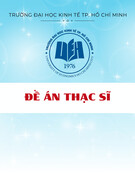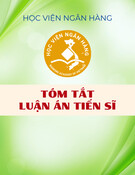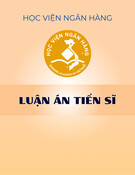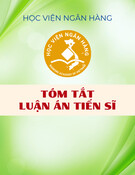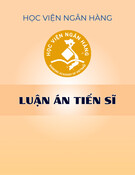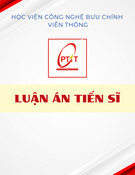ABSTRACT
Non-interest income is a common trend promoted by banks around the world.
Realizing the importance of non-interest income for commercial banks, specifically,
non-interest income is affected by factors such as profitability, bank risk,
competition, bank size, etc. Therefore, the author conducts this study to provide new
insights on the factors affecting human resources in the period 2009-2022 of 25
Vietnamese commercial banks. The thesis is divided into 5 chapters, each chapter has
its introduction and conclusion, in addition, there are the table of contents, list of
tables, list of diagrams, list of abbreviations, references, and appendix: chapter 1
introduction to the study, chapter 2 theoretical background, chapter 3 research model
and data, chapter 4 research results, chapter 5 conclusion and policy implications.
According to the overview of chapter 1, the author presents the reason for
researching the issue of non-interest income the importance of non-interest income,
especially generalizing about the research objectives, research questions, subjects,
and scope. micro-research, research data, process, and content structure in the thesis.
Based on the analysis, the author collects secondary data sources from 25
Vietnamese commercial banks in the period 2009 to 2022 from financial reports on
Vietstock and Woldbank websites on of non-interest income and factors affecting of
non-interest income, the main goal that the author aims to identify and estimate the
factors affecting the non-interest income of Vietnamese commercial banks in the
period 2009-2022, thereby, propose some functions policy ideas to contribute to
increasing this source of income for commercial banks in Vietnam. Regarding
research methods, the author uses panel data regression model estimation. The model
uses Bayesian model reliability test in order to select the model suitable model.
Besides, the author implements a research process including seven steps: identify
research problem, synthesize theory and review previous studies, identify research
model, collect data, steps data processing, results from presentation and discussion,
conclusions and policy implications.







